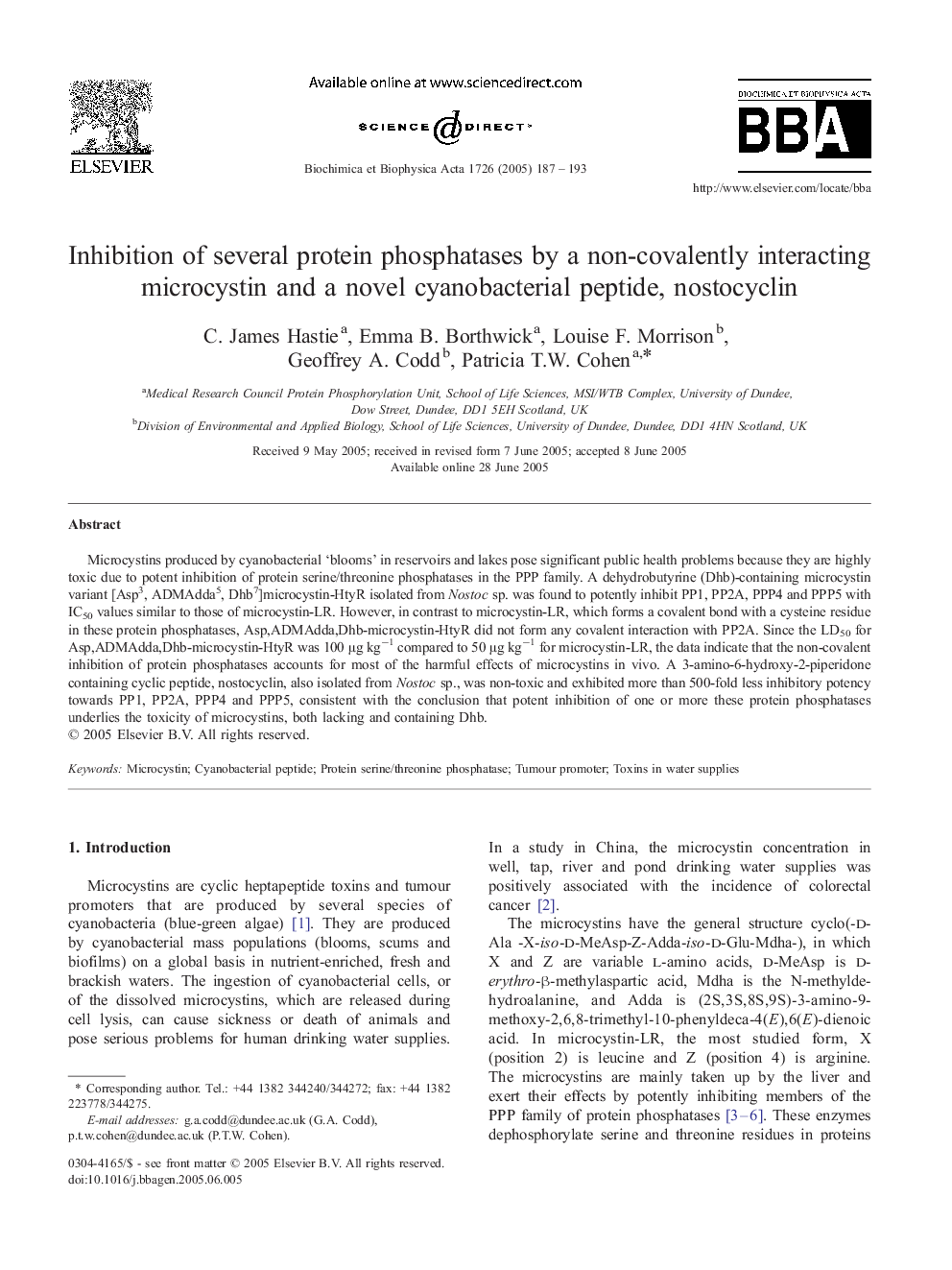| Article ID | Journal | Published Year | Pages | File Type |
|---|---|---|---|---|
| 10801029 | Biochimica et Biophysica Acta (BBA) - General Subjects | 2005 | 7 Pages |
Abstract
Microcystins produced by cyanobacterial 'blooms' in reservoirs and lakes pose significant public health problems because they are highly toxic due to potent inhibition of protein serine/threonine phosphatases in the PPP family. A dehydrobutyrine (Dhb)-containing microcystin variant [Asp3, ADMAdda5, Dhb7]microcystin-HtyR isolated from Nostoc sp. was found to potently inhibit PP1, PP2A, PPP4 and PPP5 with IC50 values similar to those of microcystin-LR. However, in contrast to microcystin-LR, which forms a covalent bond with a cysteine residue in these protein phosphatases, Asp,ADMAdda,Dhb-microcystin-HtyR did not form any covalent interaction with PP2A. Since the LD50 for Asp,ADMAdda,Dhb-microcystin-HtyR was 100 μg kgâ1 compared to 50 μg kgâ1 for microcystin-LR, the data indicate that the non-covalent inhibition of protein phosphatases accounts for most of the harmful effects of microcystins in vivo. A 3-amino-6-hydroxy-2-piperidone containing cyclic peptide, nostocyclin, also isolated from Nostoc sp., was non-toxic and exhibited more than 500-fold less inhibitory potency towards PP1, PP2A, PPP4 and PPP5, consistent with the conclusion that potent inhibition of one or more these protein phosphatases underlies the toxicity of microcystins, both lacking and containing Dhb.
Related Topics
Life Sciences
Biochemistry, Genetics and Molecular Biology
Biochemistry
Authors
C. James Hastie, Emma B. Borthwick, Louise F. Morrison, Geoffrey A. Codd, Patricia T.W. Cohen,
